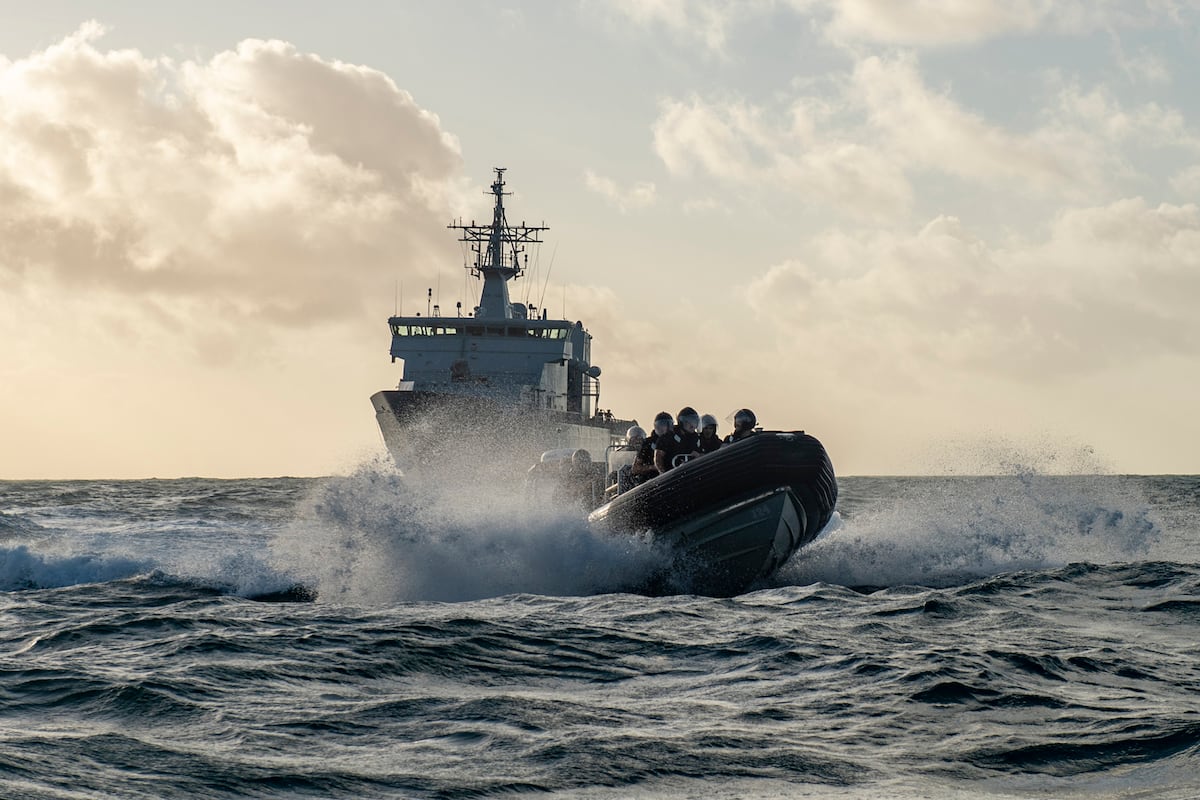The pictures show fixed arrays, presumably Thales Nederland radars as standard, in an I-Mast 100. Whether they'd be suitable for any particular role depends on the exact fit, & since they've not been built, I think that there'd be a choice available to any customers, just as with the Arrowhead 140.
Note that the 'C' models are primarily combatants. 'A' is armed but with an amphibious emphasis, & the smaller 123 & 115 models are 'security' rather than warfare-optimised.
Crossovers - Damen
You can download PDFs which give much more detail.
Saying they wouldn't be suitable looks to me as if you haven't really looked at them. The problem I see isn't suitability for what the RNZN would want or need, but the fact that there's no hardware or, AFAIK, detailed design, so the RNZN would be taking a risk.
Sure the Damen XO's are a very clever concept. But have noticed some curiosities (or oddities) eg their main combatant designs (XO139FC & XO131C) feature the smaller I-Mast 100 (not the larger I-Mast 400 or I-Mast 500, which would allow for provisioning of more or larger sensors). Even their armament is relatively "light" for their size. One VLS, is that 8 cell? Or 16 cell? But surely at least 24 cells should be the minimum? Interesting that even the Dutch Holland Class OPV's feature the larger I-Mast 400 and that's just an OPV not a combatant.
Yes I still say they wouldn't be suitable for the RNZN (I thought I explained why in my original post). The RNZN would want a combatant optimised for ASW but with AAW/ASuW capabilities slightly greater than what the XO139/131 provides (and current ANZAC's), after all there has been some interest on the record with the BAE Type 26 (or a variant of). The multirole features would likely be a negative.
Putting capabilities aside the issue with the XO139/131 are, as you stated the RNZN taking a risk on a concept vessel that hasn't been built nor anyone ordering it. Being a multirole vessel it has the ability to carry landing craft and vehicles but what use would that be when the vessel is joining an allied taskforce undertaking sea control or area denial or escorting duties or hunting submarines ... all thousands of miles away in SE Asia? Presumably they wouldn't be carried for these roles.
The second problem of being a multirole vessel is, our glorious Treasury and politicians would then say to the RNZN, sorry no T26/Hunter/CSC or Constellation Class or Type 31/Arrowhead 140 or SE Asian built specialist combatant, use these "cheaper" multirole jack-of-all-trades and master-of-none instead. It could be like Projector Projector's fallacy of a supposed Multirole Patrol Vessel (
HMNZS Canterbury), which turned out to be hopeless for patrolling, being replicated at MFU Combatant level?
But as mentioned earlier, I could see some use as 2nd/3rd tier vessels eg the smaller XO's (eg 131 L/123SF/115S (assuming the RNZN was well funded enough to operate main/specialised combatants in their primary roles as the high priority, funding wise, with extra funding for this new capability? Might be wishful thinking and unrealistic)? Well, unless perhaps as an OPV replacement (putting the Vard options aside for a moment), as that would give any OPV replacement much greater utility, capabilities and flexibilities, particularly the military "profiles" that Damen mention. But on the negative side, presumably RNZN would have to be careful not to have have such vessels "threaten" future LPD projects that are in the pipeline (remember our glorious Treasury and politicians and their "great money saving ideas").
There is a 3rd option for the XO, but it is a very, very unlikely option. That would be for the NZDF to be funded so well in the future (that every other NZDF need is addressed first) and a small "Marines" battalion unit is formed with their own specialist vessels ....
Okaay, we have a saying here, it goes "Yeah/Nah"!
If I were Damen I would actually be pitching these (larger/capable) XO vessels to the militaries in, for example, South East Asia. Why? For those nations closer to the "front line", would it make sense to have amphibious forces that can "hide" out at sea (or in a bay etc), that if their homeland landforce bases are attacked then they could be brought back safely? Or land "up the coast" somewhere to defend territory? Just a thought.

